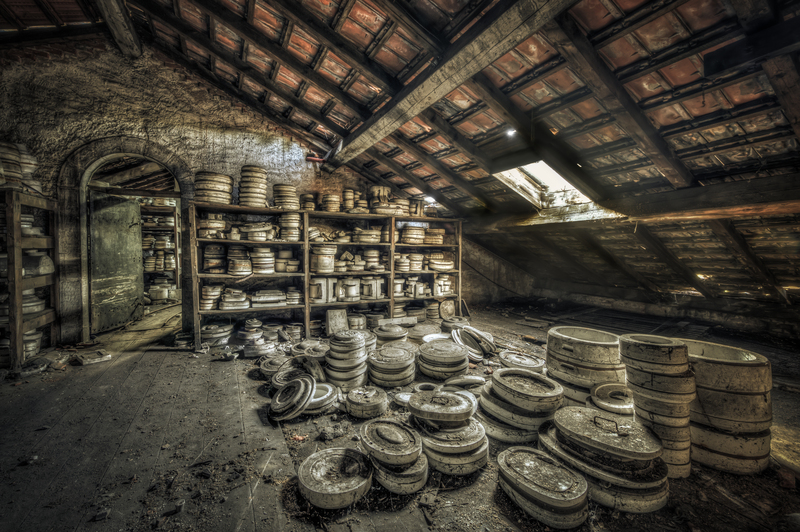Mastering the Art of Efficient Window Cleaning Techniques
Posted on 20/06/2025
Mastering the Art of Efficient Window Cleaning Techniques
If you're seeking sparkling, streak-free glass, learning efficient window cleaning techniques can transform a tedious chore into a quick and even enjoyable task. From everyday maintenance to professional-level results, mastering the art of window cleaning is essential for homeowners, businesses, and anyone who values a clear view of the world. In this comprehensive guide, we'll explore the best practices, tools, and expert secrets that will help you achieve unparalleled results--every time.
Why Efficient Window Cleaning Matters
Clean windows offer more than just cosmetic benefits. They allow more sunlight to brighten your space, support the longevity of window materials, and contribute to a healthier indoor environment. Efficiency ensures the process is quick, eco-friendly, and less laborious while delivering top-notch results.
- Boosts natural light and mood
- Enhances curb appeal
- Maintains glass integrity over time
- Removes allergens and grime
- Saves time and cleaning supplies
Main Keyword Variations
- Efficient window cleaning techniques
- Expert window washing tips
- Advanced glass cleaning methods
- Quick and easy window cleaning
- Streak-free window washing

The Science Behind Streak-Free Windows
Why do windows get dirty--and why are streaks so stubborn? Dirt, pollution, rainwater, and hard water deposits all leave residues. But streaking usually happens when cleaning products or dirty tools leave behind soap, lint, or minerals.
Efficient window cleaning is about minimizing streaks and spots by using the right supplies, techniques, and timing. It's more of a science than you might realize!
Essential Tools for Effective Window Cleaning
Successful, time-saving window cleaning begins by investing in the right equipment. Here's what professionals recommend:
- Squeegees: The gold standard for streak-free results. Select one with a replaceable rubber blade.
- Microfiber cloths: These are lint-free and highly absorbent--perfect for polishing glass.
- Window scrubber or strip applicator: Designed to loosen dirt without scratching.
- Extension poles: Critical for hard-to-reach exterior windows.
- Cleaning bucket: Wide enough to accommodate your squeegee and applicator.
- Natural or commercial glass cleaner: Opt for ammonia-free formulas to prevent streaking.
- Old towels: Ideal for catching drips on windowsills.
- Optional: Razor blade scraper for stubborn debris (always use carefully to avoid scratching glass).
Pro Tip:
If you're using ladders, prioritize safety. Make sure they're stable and placed on an even surface.
Top Efficient Window Cleaning Techniques
1. The Squeegee Method
This is the cornerstone of efficient window cleaning. Follow these steps for professional-quality results:
- Preparation: Remove screen and dust the frame and glass using a dry cloth or brush.
- Wet the Glass: Use your strip applicator or microfiber cloth to apply cleaning solution.
- Squeegee Action: Starting at the top, pull your squeegee in a single, straight stroke across the width of the window.
- Wipe the blade clean after each stroke using a dry towel.
- Slightly overlap each pass to avoid leaving lines.
- Wipe excess water from the edges using a microfiber towel.
2. The Circular Microfiber Approach
Perfect for quick maintenance or interiors. Use a high-quality microfiber cloth:
- Apply cleaning solution directly to the cloth, not the window.
- Wipe the glass in a gentle, circular motion.
- Finish by buffing with a dry side for a sparkling finish.
3. Two-Stage Cleaning for Very Dirty Windows
- Stage 1: Pre-Clean heavy grime using hot, soapy water and a non-abrasive sponge.
- Stage 2: Follow with your standard window cleaner and a squeegee or microfiber cloth.
4. Tackling Exterior Windows
- Use a hose to rinse away loose dirt before cleaning.
- For high, hard-to-reach windows, consider using a window cleaning kit with an extendable handle.
- If using a ladder, always follow safety guidelines--never over-reach!
5. Specialized Techniques for Different Types of Windows
- French windows and divided panes: Use a small squeegee blade sized for the individual panes and a detail brush for corners.
- Bay windows: Work one section at a time to prevent solution from drying and leaving marks.
- Tinted glass: Only use ammonia-free and non-abrasive cleaners.
Best Window Cleaning Solutions: DIY and Commercial
DIY Window Cleaning Solutions
- Mix two cups of water, 1/4 cup of white vinegar, and 1/2 teaspoon of dish soap for a gentle, effective cleaner.
- For extra shine, add a few drops of rubbing alcohol.
- Avoid mixing bleach or ammonia with other chemicals to prevent harmful fumes.
Commercial Window Cleaning Products
- Choose reputable streak-free glass cleaners, like Sprayway or Windex.
- For large jobs, commercial concentrates can be diluted with water, saving money and reducing waste.
- Always read labels to ensure compatibility with your window type, particularly for tinted or specialty glass.
Advanced Tips for Mastering Efficient Window Cleaning
Use the "S Pattern"
When using a squeegee, professionals recommend moving the tool in an S-shaped pattern--especially on larger panes. This prevents cleaner from running down and helps pick up every drop without leaving marks.
Time Your Cleaning Right
- Don't clean windows in direct sunlight--solutions dry too quickly, which causes streaking.
- The best time is on a cloudy day or when windows are shaded.
Maintain Your Tools
- Always rinse and dry your squeegee after use to keep the blade flexible and effective.
- Wash microfiber cloths regularly to stay lint-free.
Protect Window Frames and Sills
- Wipe soapy water off wood or painted sills quickly to prevent damage or staining.
- Use an old towel beneath the window to catch drips and protect your floors.
Eco-Friendly and Safe Window Cleaning Methods
One aspect of efficient window cleaning that's gaining traction is eco-friendliness. Homemade solutions using vinegar and baking soda are safe for people, pets, and the planet. Reusable microfiber cloths help minimize waste, and careful chemical use protects both indoor air quality and local ecosystems.
- Avoid disposable wipes and paper towels that add to landfill waste.
- Ventilate spaces while cleaning to reduce fume buildup and prevent condensation.
- Recycle empty containers when using commercial products.
The Art of Speed: Window Cleaning Hacks for Busy Lifestyles
- Work in pairs--one washes, the other follows with the squeegee.
- Start with the top floor if multi-level, preventing drips on already-cleaned glass.
- Save time using spray-and-wipe methods for interiors between deep cleans.
- Invest in a window vacuum for fast, drip-free drying.
Common Mistakes to Avoid in Window Cleaning
- Using too much solution: Excess soap leaves behind a film. Less is more!
- Neglecting to pre-clean: Dust or cobwebs left behind during washing can smear and scratch glass.
- Skimping on tool quality: Cheap squeegees or worn-out cloths lead to streaks and frustration.
- Overlooking safety: Always ensure ladders are stable and never stretch beyond reach.
Maintaining Windows Between Cleanings
Routine care keeps windows looking their best and makes efficient cleaning techniques easier each time:
- Dust regularly: Use a feather duster or microfiber cloth on glass and frames.
- Spot clean: Address fingerprints and smudges as soon as they appear.
- Keep exterior free of debris: Prune nearby plants and rinse windows after wind storms.
Guidelines for Professional Window Cleaning Services
For large homes or commercial properties, hiring a professional window cleaning service ensures fast, thorough results. When selecting a provider:
- Check for insurance and positive customer reviews.
- Request a quote and confirm the range of services.
- Ask about the cleaning products, especially if eco-friendliness is a concern.
How Often Should You Clean Your Windows?
- Homes: Every three to six months, more often if you have children, pets, or reside in a high-pollen or urban area.
- Storefronts and Businesses: Every month, or as needed to maintain your professional image.

Frequently Asked Questions About Window Cleaning
Q: Can you use newspaper for window cleaning?
A: While an old trick, today's newspapers often use soy ink that can smear. Microfiber is the top choice for streak-free glass.
Q: What's the best way to clean window screens?
A: Remove and vacuum both sides of the screen, then wash with soapy water, rinse, and dry completely before replacing.
Q: How can you prevent hard water stains?
A: Regular cleaning and applying a commercial glass protectant or a vinegar rinse minimizes mineral buildup.
Conclusion: Unlocking the Secret to Spotless Windows
Mastering the art of efficient window cleaning techniques is about preparation, precision, and the right products. By following these expert tips, you'll enjoy a brighter, cleaner home or business with minimal effort and maximum results. Whether you're a DIY enthusiast or prefer to rely on professionals, the path to sparkling windows is open to all.
Remember: The clearer your view, the brighter your day. Happy cleaning!



